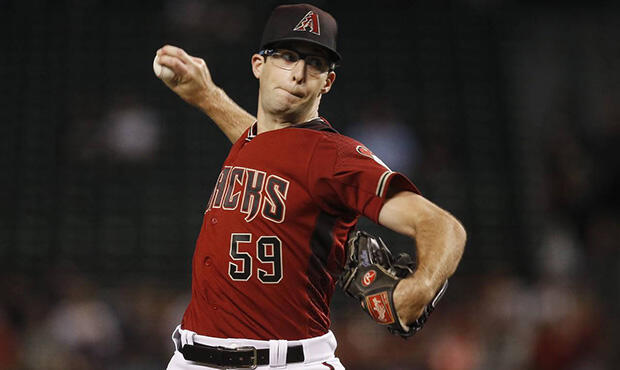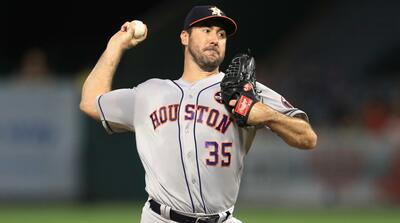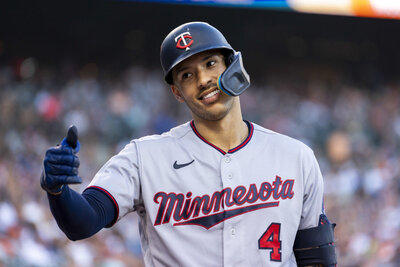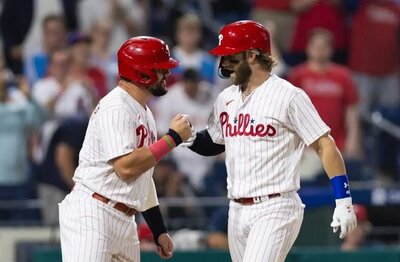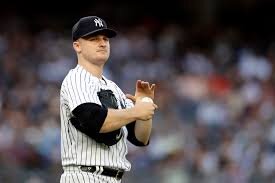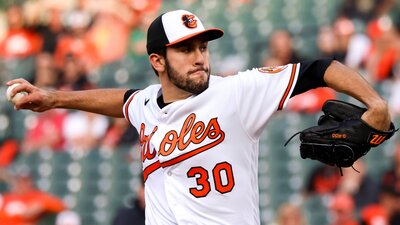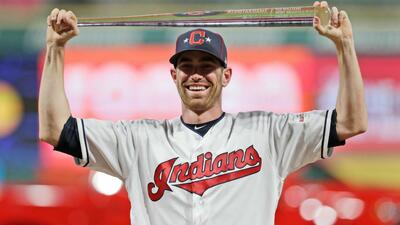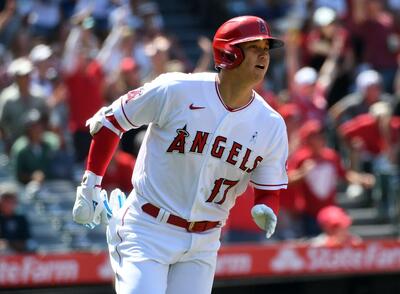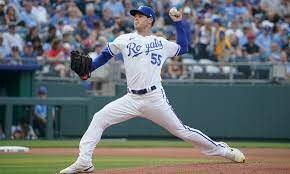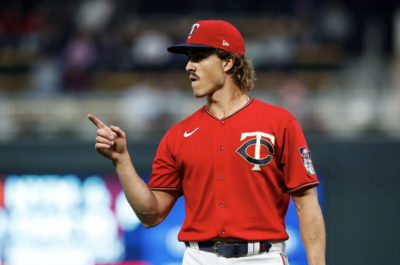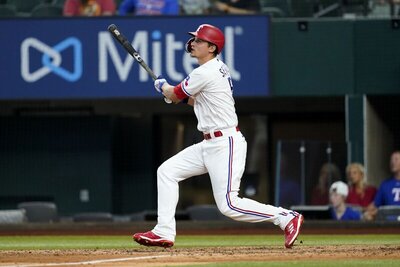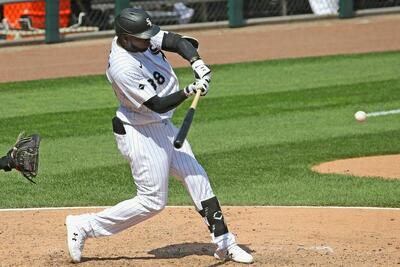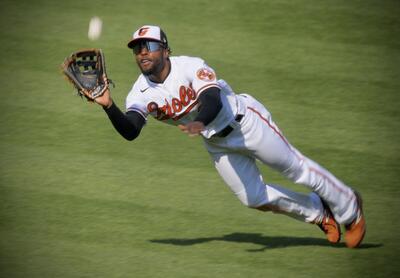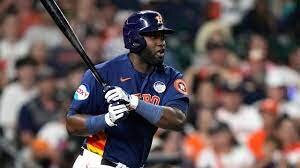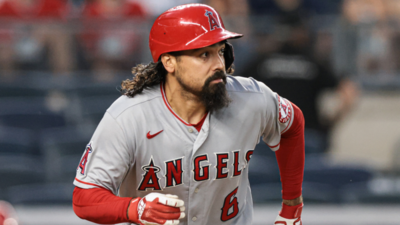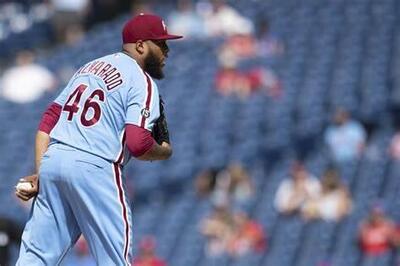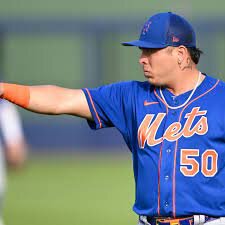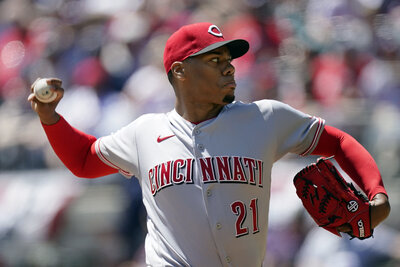Strand rate, or left on base percentage (LOB%), measures the percentage of baserunners a pitcher leaves on base over the course of an entire season. At its core, strand rate is simply a measure of the number of runners that could have scored, but never actually did. Here's the formula:
LOB% = (H+BB+HBP-R)/(H+BB+HBP-(1.4*HR))
Note: A pitcher's strand rate is NOT calculated using the actual baserunners left on base at the end of an inning, as you would see in the box score.
Over the last five seasons, the typical league-wide strand rate is usually around 73%. In other words, a typical baserunner scores just 27% of the time. Pitchers who post rates above 73% are generally considered fortunate, while pitchers who post rates below 73% and usually considered unlucky. In both cases, normalization towards the league average is generally expected.
As we've developed more metrics and have become more sophisticated with our analysis, we've determined that some pitchers have more control over their numbers than others. For example, a pitcher with an elite strikeout rate is more likely to be able to pitch themselves out of a jam than one who has a high contact rate allowed, since they are more like to escape an inning with a strikeout. As such, pitchers with elite strikeout rates tend to also have high strand rate baselines, meaning instead of comparing a pitcher to the league average, it's generally preferable to compare him to a career baseline (where a reasonable sample size is possible).
The stat itself is highly variable, which is why it's such an important one to use in conjunction with BABIP and other quality of contact metrics when evaluating a pitcher's performance. A big reason for this fluctuation is because there are a myriad of factors that can change the outcome - ranging from the quality of his bullpen, ballpark factors, the quality of the defense, umpire inconsistencies and most importantly, play sequencing. Remember, LOB% should be utilized as the starting point, but your conclusions should be drawn from the indicator stats.
Here's a glimpse at the players with the lowest LOB% and highest LOB% from June 13, 2019 through the 2020 season, which is the closest range to the latest 162 game sample that we can pull. You can use this list as a starting point to identify those who have the best chance at realizing improvement or degradation to their numbers, respectively. To help you get an idea of how to get started on this analysis, take a look at the player notes pulled from our daily InsiderBaseball pre-season email on February 27, 2021. A sample of these notes are included below the chart.
LOB% - June 13, 2019 through 2020 Season

Clayton Kershaw (LAD) - Clayton Kershaw has an ERA of 2.74 over his last 28 starts, which on the surface seems like it would indicate that he has managed to bounceback from his injury plagued 2018 season with ease. Unfortunately, lurking on the surface we see that he has done this on the coattails of an 83% strand rate. For Kershaw, his career strand rate is 79%. This is slightly concerning because in his prime he was able to support a higher LOB% (80%-87%) because he also had higher strikeout rates (31-34%) which were supported his SwSt% rates around 14-15%. Unfortunately, he has seen a pullback in those swinging strike metrics to 13% and his strikeout rate has dropped accordingly, meaning his ability to produce a high LOB% is probably equally impacted. Accordingly, sequencing or timing of hits largely has been beneficial to Kershaw, causing his strand rate to increase, rather than an actual skill improvement back to his prime underlying numbers. Don't be mistaken - the difference isn't stark and he remains a very good starting pitching option in 2021, but it's important to factor in a little bit of regression when valuing him this year.
Jose Quintana (LA) - The Cubs let Jose Quintana walk after the 2020 season, allowing him to reunite with former manager Joe Maddon with the Angels. Quintana has struggled over his last 19 starts, posting a 5.28 ERA. Quintana's LOB% was just 63% over that range, one of the lowest metrics among all starting pitchers and 11% lower than his career average. With largely a similar strikeout rate, it's important to understand Quintana's profile as a starting pitcher. Q has always succeeded by inducing ground balls and limiting hard contact - but what happens when he doesn't limit hard contact? The answer - at least in part - seems to be a BABIP about 40 points higher than his career levels. Quintana has allowed a 42% hard hit rate over his last 19 starts compared with his career 31% levels. The key for left-hander moving forward will be improving the quality of contact allowed. Can he do it in 2021? Maybe a change of scenery with help, but in his case, this isn't just a matter of bad luck. He needs to make tangible adjustments in his age 32 season to bounceback to his previous performance levels.
German Marquez (COL) - Poor German Marquez has a career 72% strand rate - exceptionally low for a player with a career 11.5% swinging strike rate - but since he plays half his game in the most hitter friendly place in baseball, not even strikeouts can stop him from allowing baserunners to score. Over his last 26 starts, Marquez has a 64% LOB% and a 4.58 ERA. His supporters point to his 3.70 xFIP as a sign that he has pitched better than his ERA shows. While that might be true, Coors Field has caused his career delta between xFIP and ERA to be about 65 points. This is mostly because xFIP neutralizes a player's HR/FB rate to league average levels - something that simply can't be done for players in Coors field. With that said, his career ERA and FIP only have a 40 point delta and FIP does not neutralize HR/FB. If you're looking for upside, consider that Marquez still has elite strikeout ability with a 12% SwStr% and it's fair to reason that huis career 24% strikeout rate is a little understated based on his skills. Marquez might never been viewed as a safe option, but at 26 years old, there's still upside here.
Dylan Bundy (LA) - Dylan Bundy was one of the trendiest names heading in 2020 and he failed to disappoint. A look at this strand rate poses a fascinating question, however. His last 28 starts have resulted in a 69% LOB%, pretty close to being in line with his career 72.5% rate. This doesn't make sense since he's a pretty good strikeout pitcher (23% career) and showed even more growth recently. In fact, his 13% swinging strike rate over his last 28 starts is among the best across any starting pitcher. Bundy started to unlock higher strikeout numbers in the 2020 season and there's still room to grow at the rate he induces swing and misses and generates chasing of pitches out of the zone. Bundy's performance in 2020 absolutely is legit and he remains a candidate for continued growth in 2021 despite already breaking out last year.
Joe Musgrove (SD) - A longtime fantasy darling, Joe Musgrove is yet to really break out. Sure, we started to see the pendulum swing in his favor in 2020, but he's been one of the most unlucky pitchers in baseball throughout much of his career. This unluckiness can be seen in his strand rates - 69% in 2018 and 63% in 2019 - and finally in 2020 he saw the correction to 77% and the results were dramatic, which about a 60 point swing in his ERA. Despite that, there's still reason to see even more upside in Musgrove. New team aside (which should be a good thing getting out of Pittsburgh), Musgrove was actually pretty unlucky with his 17% HR/FB rate last year, especially when you consider his barrel percentage was just 5% and his hard hit rate allowed was an eye-popping 24%. This will regress and further move Musgrove's stats more favorable, but what's exciting is that he's actually showing tangible growth in other areas of his game, like improving his SwStr% to 14%. All this combined created the package of an extremely attractive starting pitching option in 2021.
Kenta Maeda (MIN) - In his first year in Minnestoa, Kenta Maeda proved to be the actual ace of the rotation. While is may be easy to write off Maeda's rise as small sample noise, his performance over his last 24 games suggest his 2020 was no fluke. In fact, over the larger sample, we see Maeda was a victim of bad sequencing - 72% strand rate despite a remarkable 16% swinging strike rate. Maeda's strong ability to control his quality of contact allowed (29% hard hit rate and 5% barrel rate) go a long way to help keep his BABIP low, while his ability to command the strike zone reduces unnecessary baserunners. Now that he's out of LA, the kid gloves can come off over the course of the entire season. Maeda averaged over 6IP in 2020, a pace which could give him 193 innings pitched over a full season with 32 starts.
Mike Fiers (OAK) - Mike Fiers should be feared, but maybe not in the way you might think. Despite posting an ERA of 3.78 over his last 29 starts, Fiers has largely done it with smoke and mirrors. His LOB% of 80% is at odds with his 76% career mark - especially when you factor in his steep decline in strikeout ability over the last few seasons. His 86% contact rate from 2020 is scary when factor in his 7.5% barrel rate allowed. Avoid him in his 35 year old season.
Eduardo Rodriguez (BOS) - E-Rod missed the entire 2020 season due to complications related to Covid-19, so it's easy to overlook him in the 2021 season. That's a mistake because E-Rod is one of the more appealing starters given his age and untapped upside, namely his combination of great quality of contact metrics (5.9% barrel %), above average SwStr% (11.7%), heavy groundball-inducing approach and deep repertoire. E-Rod had a tough start to the 2019 season, but his second half was strong and will look to regain his form as he bounces back from a missed season.
Zac Gallen (AZ) - Zac Gallen was a trendy pick heading into 2020, yet he still managed to provide value on top of his pre-draft inflation in 2020. The problem with Zac Gallen is that while he has legitimate tools, his actual performance in 2020 was aided, at least in part, by favorable luck. To be more specific, Gallen's 84% strand rate is going to be challenging to maintain even with his plus strikeout ability. In that same space, his .275 BABIP is pretty low, especially for a player giving up hard contact at around the league average rate. Working for him is an excellent 5.5% barrel rate, but be wary of paying full price for his 2020 performance since there will likely be a little regression on the horizon.
Dakota Hudson (STL) - Few players have realized the amount of success that Dakota Hudson has seen over his first 241 innings as a major leaguer. Hudson is a very heavy contact/groundball pitcher with very few strikeout, which works well for him in practice. The problem is that in addition to being a high contact, low strikeout pitcher, he's walking 12% of the batters he faces. That's a lot of baserunners, but thanks to his 78% strand rate, he has managed to come out relatively unscathed. Unfortunately, when you aren't striking out batters, you're relying on BABIP and your defense to bail you out. In Hudson's case, his BABIP is just .258, despite a hard hit rate allowed of 38.5% which is well above league average. As these batted ball samples grow larger, his BABIP will likely move closer to the league average mark around .300. With plenty of runners on base, more runners will score and his ratios will inflate. Hudson has been a great success story, but sometimes the best decision is knowing when to cash out before it's too late.

